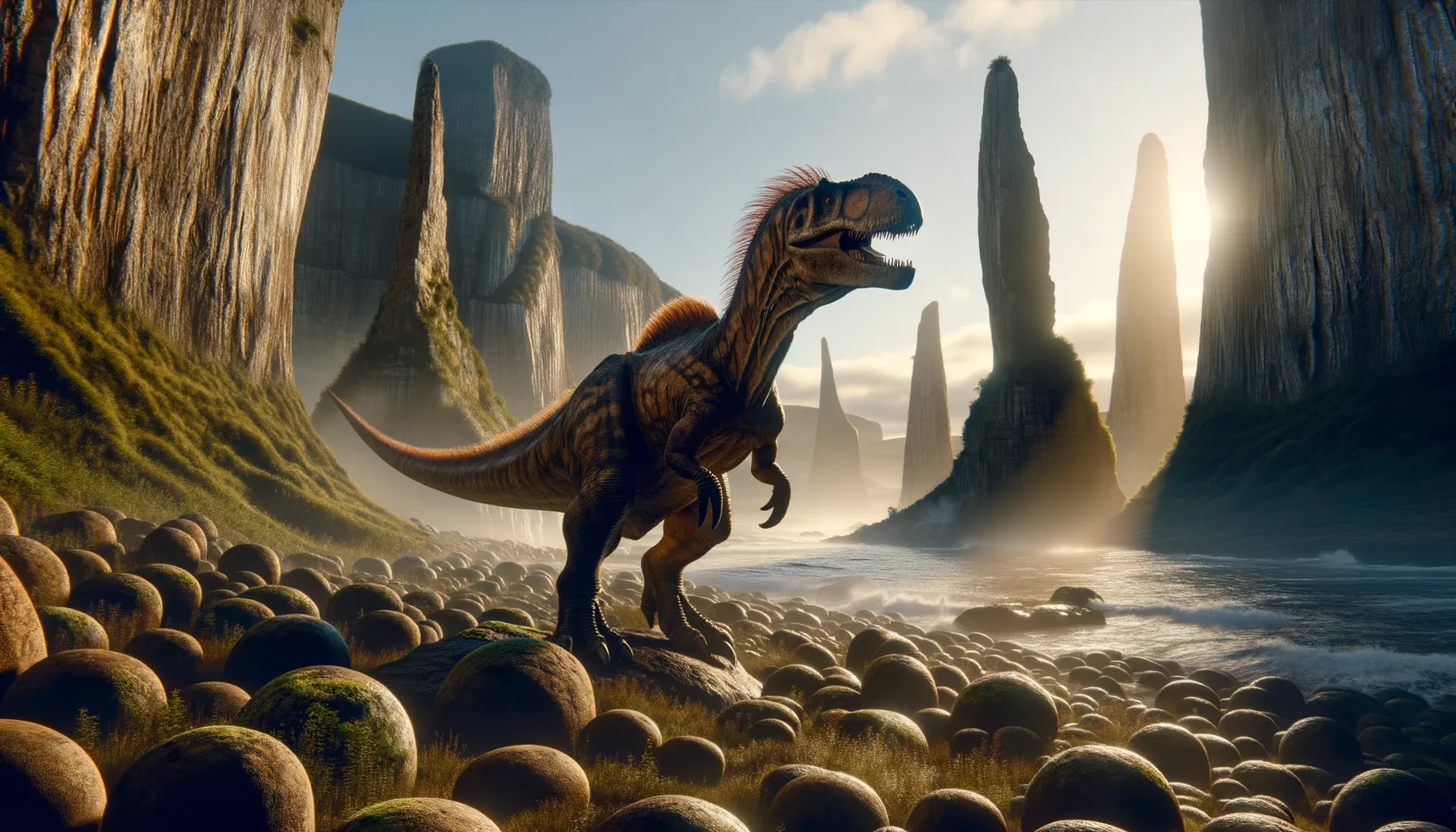
Syngonosaurus
Mysteries of the ancient Cretaceous era.
Period
Cretaceous
Length
Length estimates are speculative at best.
Height
Height details are speculative due to fragmentary fossils.
Weight
Weight estimates are unclear due to sparse remains.
Syngonosaurus is a lesser-known dinosaur from the Cretaceous period, mostly recognized from fragmentary remains. It is challenging to determine its definitive characteristics due to the limited fossils that have been found. This dinosaur provides insights into the diversity of herbivorous dinosaurs that once roamed what is now the United Kingdom. Although not much is known, it lives on through the sparse bones that fuel scientific curiosity.
Diet
Syngonosaurus is believed to have been herbivorous, feeding primarily on the lush vegetation that was abundant during its time. This diet likely included ferns, cycads, and conifers, which were common in its habitat.
Hunting
There is no evidence to suggest that Syngonosaurus engaged in hunting behavior. As a herbivore, it would have foraged for plants and relied on the natural abundance of greenery.
Environmental challenges
During the Cretaceous, Syngonosaurus faced fluctuating climates and changing sea levels, which would have affected the availability of its plant-based diet. Predators might have posed a threat, requiring adaptations for defense, though specifics are unknown. Vegetation distribution may have varied, necessitating migration or foraging strategies.
Speed
Its speed is largely unknown due to limited fossils.
Lifespan
Estimated to live for a few decades, possibly around 20 to 40 years.
First discovery
First discovered in the 19th century in England.
Fun Facts
- Syngonosaurus was a type of herbivorous dinosaur that roamed what is now the United Kingdom during the early Cretaceous period.
- Its name, Syngonosaurus, means 'fused lizard,' referring to some of its unique bone structures.
- The fossils of Syngonosaurus were first discovered in the 19th century and have been a subject of scientific debate due to their incomplete state.
- Scientists believe that Syngonosaurus might have had a beak-like structure similar to those of modern birds.
- There is still much mystery surrounding Syngonosaurus, making it a fascinating subject of research and discovery.
- Syngonosaurus was roughly the size of a large dog, which is quite small compared to some of its giant dinosaur cousins.
Growth and Development
Information on the growth and development of Syngonosaurus is limited due to the incomplete fossil record. It likely followed a growth pattern akin to other herbivorous dinosaurs, where juveniles gradually grew into their adult forms. Development stages and sizes remain speculative.
Habitat
Syngonosaurus lived in what is now England, an area that was warm and possibly coastal during the Cretaceous period. It would have inhabited regions with abundant plant life, necessary for its herbivorous diet. The landscape likely included lush forests with diverse plant species.
Interaction with other species
Interactions with other species remain speculative, but Syngonosaurus likely coexisted with various dinosaurs and other prehistoric creatures. It may have formed herds for greater protection against predators. Competition for resources with other herbivores might have influenced its behavior and movements.
Natural lifespan
Its natural lifespan might have ranged from 20 to 40 years.
Reproduction
Reproductive behaviors of Syngonosaurus are not well-documented. Like many dinosaurs, it is assumed to have laid eggs, with nests and parental care being speculative behaviors based on related species.
Social behaviour
Social behavior is largely unknown but may have resembled that of other herbivorous dinosaurs, potentially involving herd formation for protection. Communication methods, if any, remain speculative due to limited evidence.
Fossil locations
Fossils of Syngonosaurus have been found in the UK, particularly in regions known for Cretaceous deposits. These discoveries have been sparse, making detailed study and conclusions difficult.
